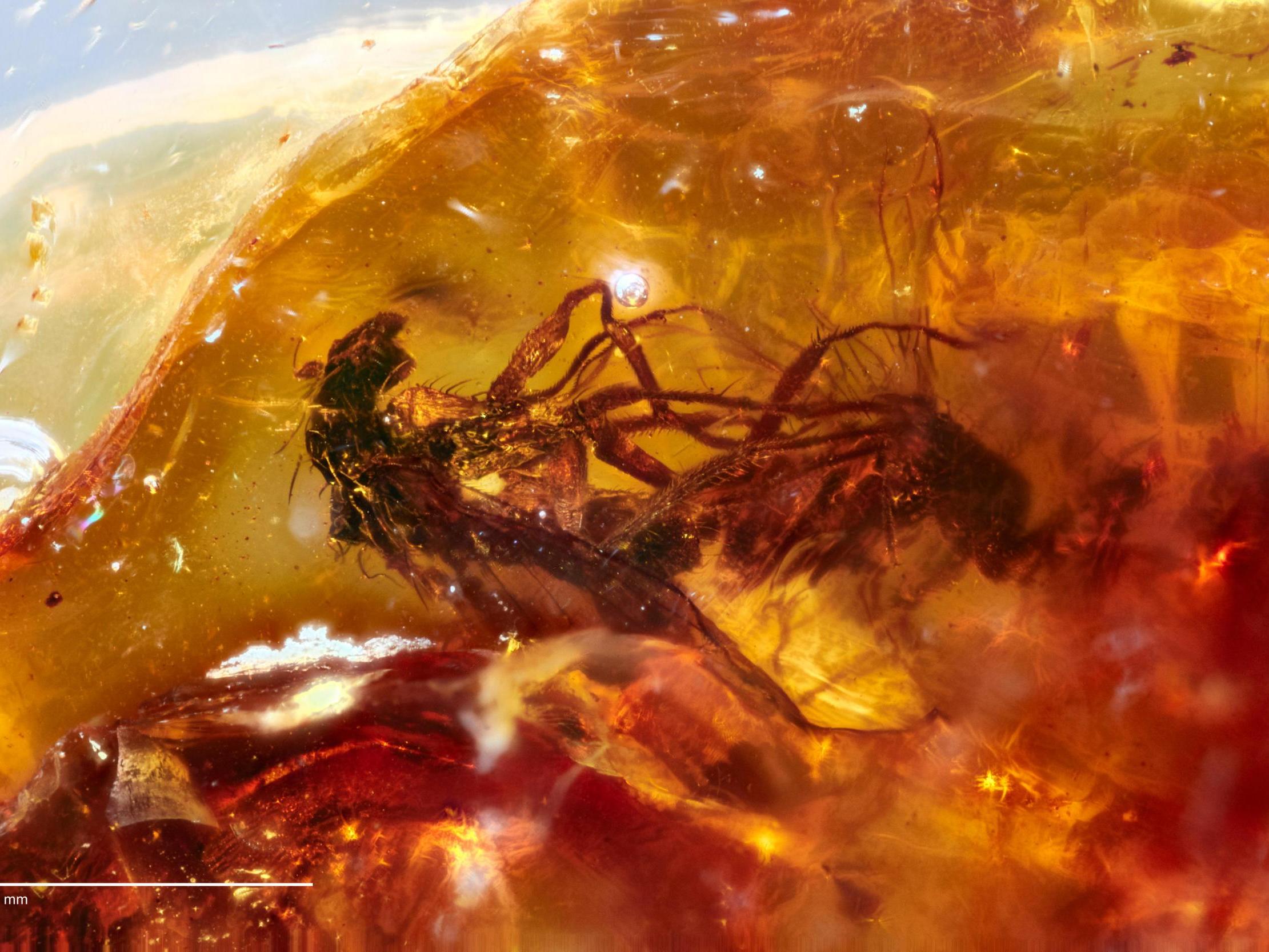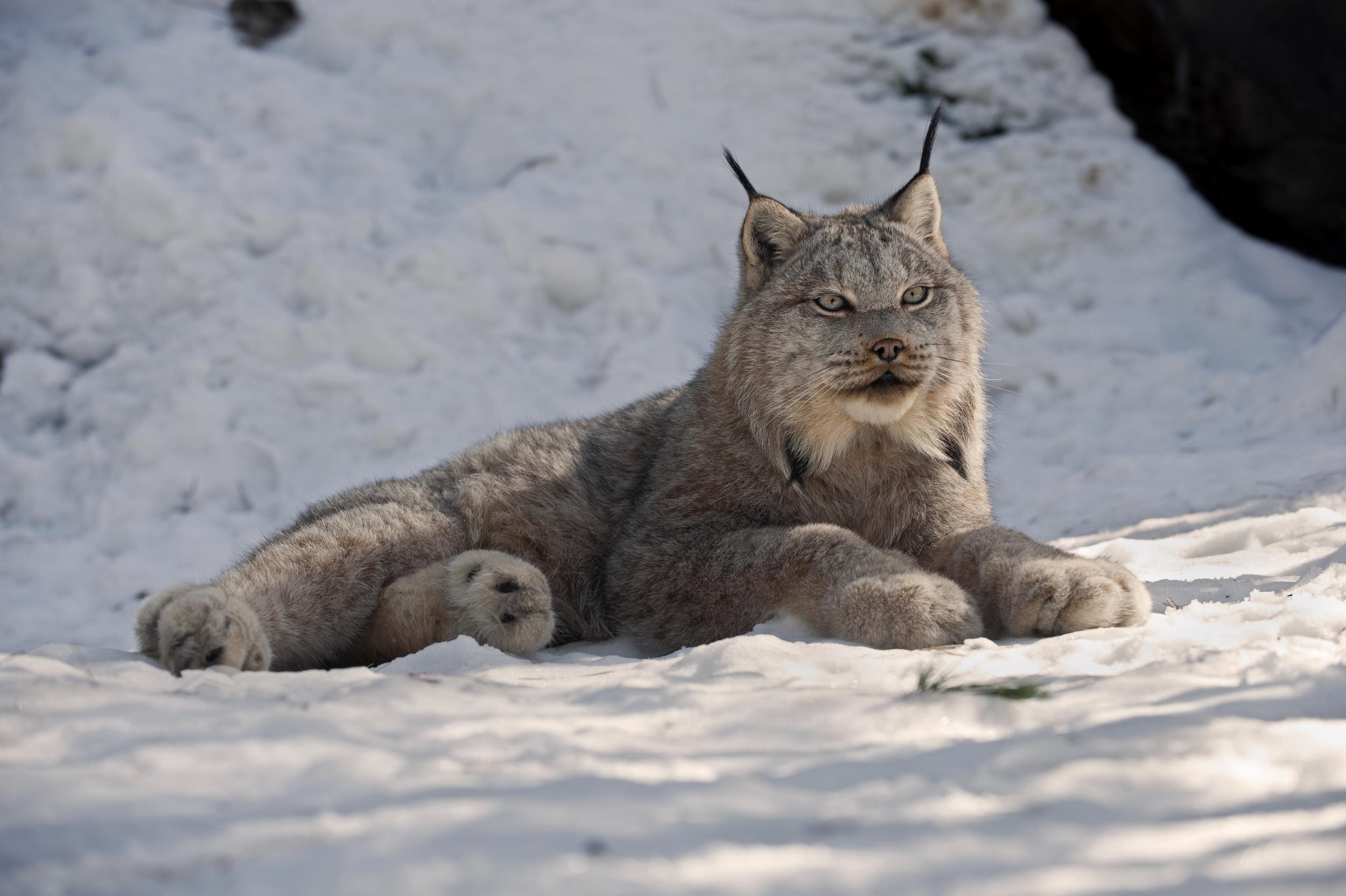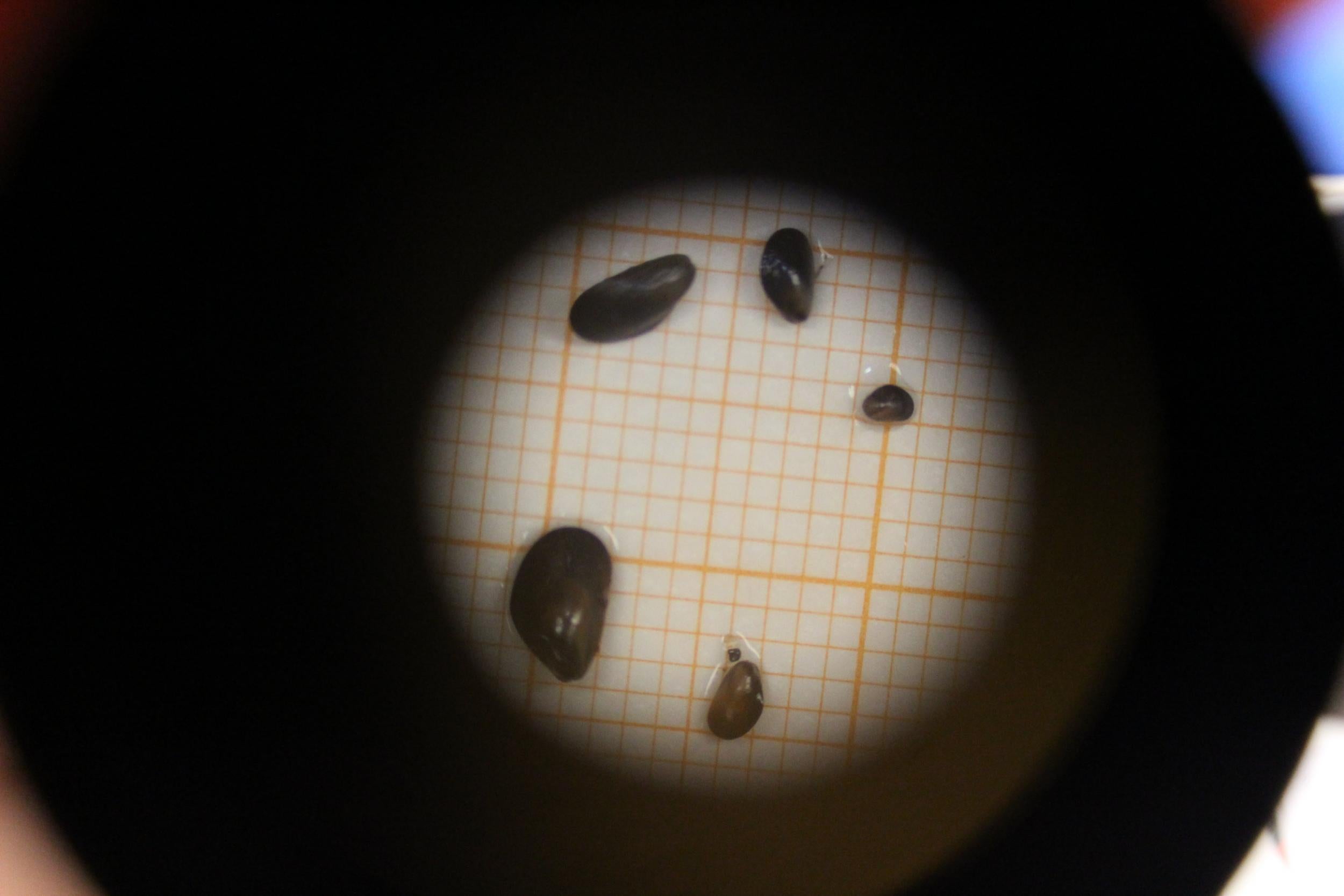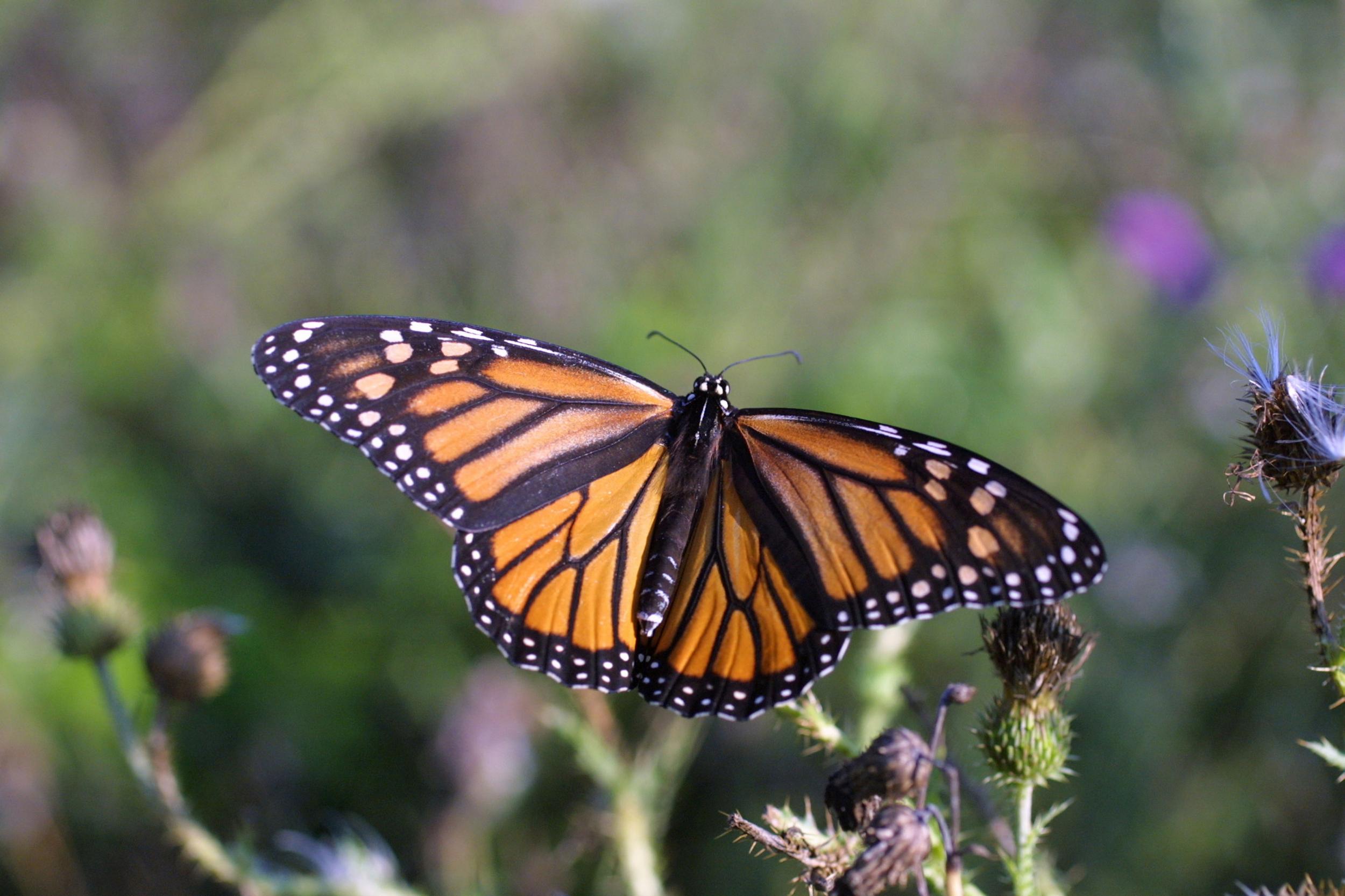Science news in brief: From mating flies frozen in time to butterflies in captivity
And other stories from around the world

Your support helps us to tell the story
From reproductive rights to climate change to Big Tech, The Independent is on the ground when the story is developing. Whether it's investigating the financials of Elon Musk's pro-Trump PAC or producing our latest documentary, 'The A Word', which shines a light on the American women fighting for reproductive rights, we know how important it is to parse out the facts from the messaging.
At such a critical moment in US history, we need reporters on the ground. Your donation allows us to keep sending journalists to speak to both sides of the story.
The Independent is trusted by Americans across the entire political spectrum. And unlike many other quality news outlets, we choose not to lock Americans out of our reporting and analysis with paywalls. We believe quality journalism should be available to everyone, paid for by those who can afford it.
Your support makes all the difference.Scientists find two mating flies trapped in prehistoric amber
Amber, or fossil tree resin, exists in rock layers all over the world. But for some reason, palaeontologists never found much of it in Australia or New Zealand.
That’s why it was exciting when Jeffrey Stilwell, a palaeontologist at Monash University in Melbourne, and a group of students, found a stash in southern Australia in 2011. The find led Stilwell to mount a search for more amber at sites across Australia and New Zealand, with one of the specimens more unusual than all the rest: It contained two insects frozen in the act of mating.
“I looked at the piece under the microscope, and when I looked at it, I said, ‘This looks really important, because it looks like they’re almost attached or something,’” he said. “I couldn’t believe it – it looks like they’re mating.”
Stilwell and his colleagues detailed their findings in a paper published in Scientific Reports.
Stilwell calls this “frozen behaviour.” Such a thing is exceptionally rare in the fossil record, because it means absolutely nothing happened in the moments between when the flies were living and when they died and became entombed. It’s comparable to what happened to humans in AD79 at Pompeii, when volcanic ash from the eruption of Mount Vesuvius smothered and froze some Romans in a flash.
It’s possible that the flies are not in the precise position they were when they died – but they’re close. “It’s true and valid information,” said Victoria McCoy, a palaeontologist at the University of Wisconsin, Milwaukee, who was not involved in the discovery. “It’s possible one fly was trapped in the amber and the other was a little excited and tried to mate.”
The first amber samples the team found came from Australia’s Otway Basin, a site where Stilwell led students for research in May 2011. He did a double-take when they first stumbled upon the amber.
“I started to see bits of gold, ‘clear gold,’ if you want to call it that,” Stilwell said. “I knew exactly what it was. I knew it was amber. I could not believe my eyes when I saw that.”
It came from outside our solar system and now it’s breaking up

It came from beyond our solar system. But the sun wasn’t content to let it leave in peace, or in one piece.
Comet 2I/Borisov, an Eiffel Tower-sized clod of dust and ice, plunged into our solar system last fall, exhaling vapour as it buzzed nearest to our sun around Christmas. This alien visitor must have formed around a distant and unknown star.
It slumbered as it crossed the frozen gulf of interstellar space. But now, suddenly, the sleeper is awake and kicking. To the simultaneous delight and frustration of the world’s astronomers, Borisov has sloughed off at least one fragment over the last few weeks.
The action began last month, when the Hubble telescope spotted at least one chunk of the comet breaking off like a calving iceberg. That clump has since fizzed away into nothingness.
These fireworks offer astronomers a unique glimpse at the exposed guts of this interstellar object, just the second humanity has ever spotted. The first visitor from another star system, 2017’s 1I/Oumuamua, behaved like an inert hunk of rock. “This one has now cracked open its gooey centre and we can see what’s inside,” said Michele Bannister, a planetary astronomer at the University of Canterbury in New Zealand.
Astronomers had hoped, even predicted, that Borisov might crack up this spring while heading back out of the solar system to once again sojourn among the stars. But the first signs it was stirring came in early March, right as the coronavirus pandemic ramped up. That’s when ground-based astronomers in Poland spotted the comet suddenly brighten, even though it should’ve been dimming as it got farther from the sun.
Several competing teams of scientists had already booked coveted slots to study the comet over the next few months with Hubble. Spurred by the news out of Poland, they rushed to move up their own observations, hoping to catch the comet acting up.
The clincher came on 30 March, when a group led by David Jewitt at the University of California, Los Angeles, downloaded a fresh image taken by Hubble. Instead of just a circular blob that would show the comet’s nucleus, they saw an elongated shape, suggesting a smaller fragment of the nucleus had split off and was slowly drifting away from the main object. “It’s like a little lug nut dropped off your car,” Jewitt said.
Another team, led by Bryce Bolin at Caltech, said they’ve spotted an earlier clump breaking off in Hubble images, too, possibly corresponding to a piece that could have caused Borisov’s sudden brightening in early March. “I’m hoping that this object is going to be producing more fragments,” Bolin said, “but not completely, catastrophically break up into a million pieces in a cloud of dust.”

Lynx numbers are in decline in the west
In recent years, the US government has considered removing protections for the Canada lynx, which has been listed as a threatened species.
But a recent study in Washington state shows the medium-size wild cat continues to be very much at risk in the northwest.
The largest-scale survey of lynx in the state relied on 650 cameras triggered by motion detection. The cameras captured 2 million pictures during the summers of 2016 and 2017, which researchers and undergraduates at Washington State University then scanned looking for lynx.
Led by Travis King, a graduate student, the team found the wild cats in only about 20 per cent of 2,700 square miles of potential habitat, according to the study, published online last month in the Journal of Wildlife Management.
“There was quite a bit of concern about lynx in the state, which is why we initiated this study,” said Dan Thornton, a senior author of the study and an assistant professor at Washington State. “That concern is warranted given what we found.”
No one knows the exact number of lynx in the region, though the Washington Department of Fish and Wildlife estimated in 2016 that there were about 54 animals, an estimate that Thornton’s analysis supports.
But the situation is probably even worse than what the Washington state team recorded just a few years ago, Thornton said. In 2018, catastrophic forest fires burnt through some of the areas that still had lynx. The habitat area affected by the fires will likely take 20 to 40 years to recover, he said, by which point the climate will have warmed further and the lynx will be even less likely to move back in.
“It becomes a spiral downward, which is what we’re worried about,” he said.

The invasion of Antarctica begins with mussels
Given its geographic isolation and bone-chilling temperatures, Antarctica has long held up a “no soliciting” sign when it comes to invasive species. But now the first successful marine invaders have breached the White Continent’s door.
Scientists found a colony of mussels, most likely transported from Patagonia via ship, near the largest of the South Shetland Islands some 75 miles north of the Antarctic Peninsula. This discovery, published last month in Scientific Reports, is a harbinger of future invasions, the researchers suggest, particularly as climate change afflicts the Southern Ocean and ship traffic in the region increases.
Paulina Bruning, a marine biologist at Laval University in Quebec City, never set out to find mussels in Antarctica. When Bruning dove in the water of Fildes Bay on King George Island, she was focused on collecting native coral and sea sponges.
But back in the laboratory, Bruning spotted several dozen juvenile mussels clinging to one of her specimens, an orange sponge. That was unexpected – mussels aren’t native to Antarctica. In fact, there’s never been any evidence of young mussels surviving in such cold water.
The bivalves, just a few months old, were barely larger than a pencil tip. “They’re like black dots,” said Jean-Charles Leclerc, a marine ecologist at Chile’s Catholic University of the Most Holy Conception, and a member of the research team. “You need to look closely.”
Using DNA sequencing, the scientists concluded that the animals were probably Patagonian blue mussels. They must have travelled about 500 miles from warmer waters near the southern tip of South America. But the bivalves probably didn’t drift there, because circulating ocean currents effectively barricade Antarctica. “Natural transport is really unlikely,” Leclerc said.
But ships, particularly research and tourist vessels, frequently travel between South America and the South Shetland Islands. From 2017 to 2019, more than 200 ship stopovers occurred at Fildes Bay. This bay, close to numerous research stations and penguin colonies on King George Island, is “the door of Antarctica,” said Leyla Cardenas, a geneticist at the Center for Dynamic Research of High Latitude Marine Ecosystems in Chile, who led the new research.
And with ships come stowaways – adult mussels often cling to vessel hulls. “People have been moving sea creatures around the world for probably as long as we’ve been moving around the oceans, particularly things that like to be stuck on ships,” said Arlie McCarthy, a zoologist at the University of Cambridge, not involved in the research.
A few months ago, Bruning and other researchers returned to Fildes Bay. However, there was no sign of the mussels. It seems that they didn’t make it through the brutal Antarctic winter.

What’s wrong with butterflies raised in captivity?
Monarch butterflies look delicate, but they need to be super-tough to survive their annual migrations. The monarchs of eastern North America may travel thousands of miles to their winter home in Mexico’s Sierra Madre mountains. And, increasingly, they’re not making it, a problem that has been blamed on habitat loss, climate change and pesticides.
In an effort to boost the struggling insect’s numbers, some butterfly enthusiasts buy monarchs raised in captivity or breed their own, then set them free. But research published in Biology Letters shows that captive-born monarchs are weaker than wild ones – adding evidence to the arguments of those who warn that releasing them does more harm than good.
Earlier research has shown that monarchs raised in captivity are less likely to reach Mexico. To find out why this might be, Andy Davis, an ecologist at the University of Georgia, and his co-authors raised 83 monarchs in two different indoor settings, using eggs from wild butterflies. They also caught 41 wild monarchs and brought them into the lab. Then they put the insects through a series of tests.
The scientists measured the monarchs’ wings, because larger, more elongated wings are known to help with migration. They also assessed the orange colour of the butterflies, which can range from pale yellow to nearly brick red. Monarchs with darker orange wings are more successful migrators, though this probably has to do with the butterflies’ overall fitness and not the colour itself.
Finally, the scientists tested the monarchs’ strength. During migration, monarchs may have to hold on tightly to trees during high winds or storms. The researchers attached a wooden rod to an electronic force gauge and wrapped the rod in plastic mesh so the butterflies could grip it. Then they had each butterfly grasp the perch with its feet, and gently tugged the butterfly upward until it let go.
Wild butterflies dramatically outperformed those born in captivity. On average, captive-born monarchs were less than half as strong as wild ones. Though their wing size wasn’t significantly different, the captive-born monarchs had less elongated wings. They were also paler in colour.
Something about rearing monarchs in captivity seemed to make them less fit for migration. Davis thinks the most likely explanation is that hand-raising caterpillars is too safe.
In the wild, monarch caterpillars often become food for other animals. Only about 5 per cent reach adulthood, Davis said. That’s before migration, which itself takes a huge toll on the population. “Only the strongest, fittest individuals ever make it to Mexico,” he said. But in captivity, all the insects survive. “You’re basically bypassing natural selection.”
© The New York Times
Join our commenting forum
Join thought-provoking conversations, follow other Independent readers and see their replies
Comments